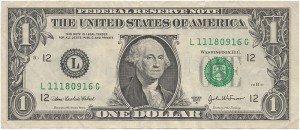 The dollar fell for only the first time in the last three weeks as economic data in the U.S. was stronger than expected and spurred an outlook that growth in the biggest economy in the world is starting to build momentum. That prompted investors to look for assets that were higher yielding.
The dollar fell for only the first time in the last three weeks as economic data in the U.S. was stronger than expected and spurred an outlook that growth in the biggest economy in the world is starting to build momentum. That prompted investors to look for assets that were higher yielding.
The dollar however, increased versus all of the 16 most traded currencies as Mario Draghi, the president of the European Central Bank said the Bank would start to buy debt from euro-bloc countries to help stave off the flow of the debt crisis in the region. In the U.S., the Federal Reserve will issue the Beige Book survey next week prior to its policy meeting later in the month. The Beige Book is a survey of regional businesses.
Bond buying in Europe has given some confidence to the market to apply risk. The market is attempting to buy into the growth in North America. If the U.S. is able to keep its ship upright, there will be a want to own more risk, said on Wall Street analyst.
The dollar fell by 1.4% to $1.30 against the euro, after increasing 0.9% in five sessions prior. The currency from the 17-nation bloc increased 2.4% to 102.57 against the yen. The currency from Japan depreciated 0.9% to only 78.67 against the U.S. dollar.
The jobless rate in the U.S. dropped unexpectedly to 7.8% in September, said the Labor Department on Friday. New jobs were up by 114,000, which was close to matching many of the estimates on Wall Street.
